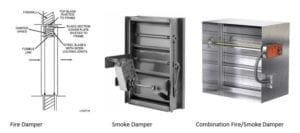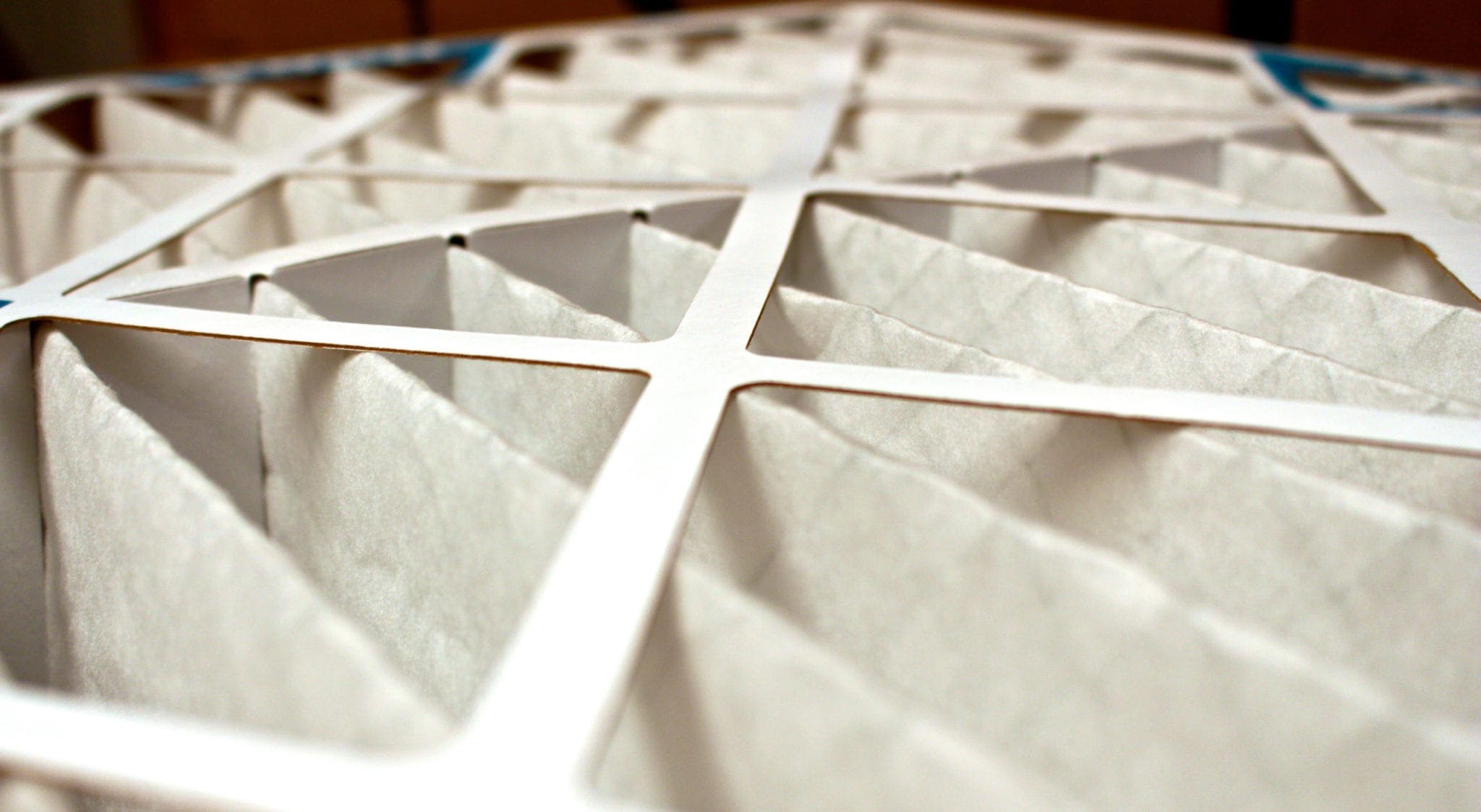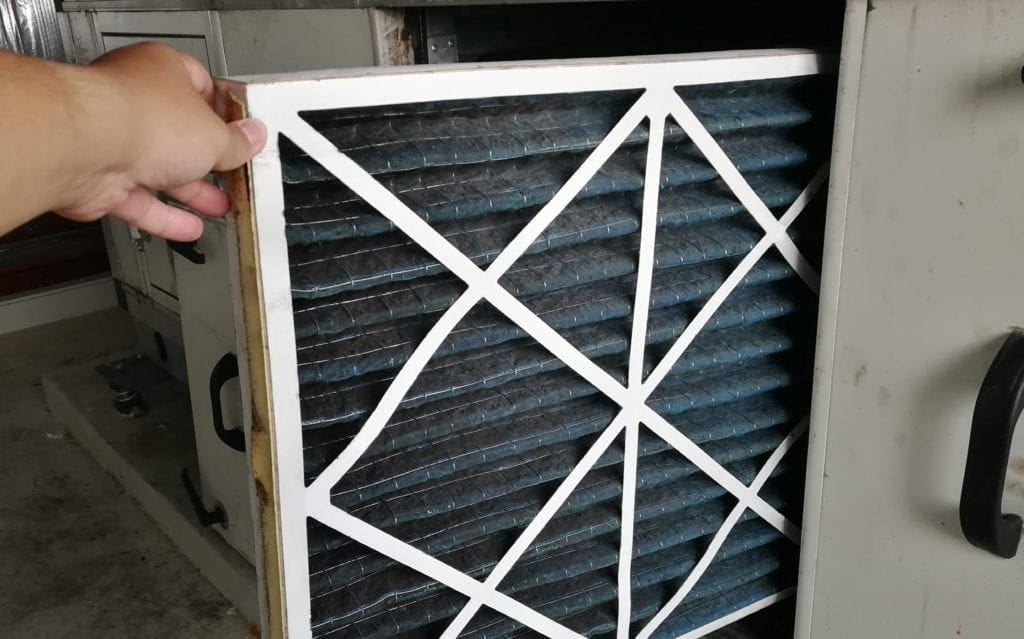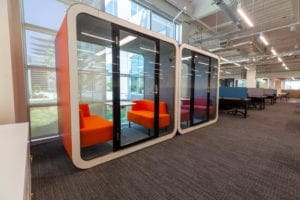
The Importance of Fire and Smoke Dampers in Your Building’s Fire Protection System
Fire protection systems can help manage or extinguish fire, aid in occupant evacuation, and help protect property from damage.
Learn from award-winning professionals — explore our whitepapers, blogs, and the latest industry updates.
Join our dynamic organization of engineers, land surveyors, landscape architects, environmental scientists, and architects!
Talk to a market leader today! We’ll answer any questions you have about our professional services.

Indoor Air Quality (IAQ) is increasingly a top priority for the developers of Class A office space and those who operate those buildings. The reason, and the urgency behind the transition to ever-healthier interiors, is obvious. The global airborne COVID-19 pandemic is creating havoc everywhere. In an era where we are accountable for our environmental footprint, we need to understand the nexus of IAQ and energy efficiency.
But even if COVID wasn’t an issue, there’s a huge, cost-effective and occupant health benefit to improving IAQ. Studies show that, in terms of the bottom line, it can translate into millions in profits over a 10-year cycle. This windfall, through reduced sick days and greater employee efficiency, is the hallmark of truly high-performing office space. While Indoor Air Quality should always be pursued, in the context of the world we live in now, COVID is the key driver behind the heightened interest in healthy interiors.
So, if air quality is a priority for a Class A, 100,000 SF building populated with blue-chip professionals demanding peace of mind vis-à-vis the pandemic, it’s important to figure out how to best deliver it and how much energy it will consume. Two common strategies are often analyzed for improving Indoor Air Quality — high-efficiency particle filtration for HVAC systems, and increasing outside air percentages. Both are effective and can be used in tandem. However, when looking at their impact on the bottom line, filtration and outside air are two different things. Those differences must be understood if the best solution is to be found for that five-story office block already in the central business district, or the future project that’s still under design.

Once the standard for Class A office space, the MERV 8 filter is on its way out. With COVID front and center, both the Center for Disease Control (CDC) and American Society of Heating, Refrigerating, and Air-Conditioning Engineers (ASHRAE) recommend MERV 13, which has additional filter media than MERV 8 and captures more particulate matter — including COVID. But what are the energy ramifications associated with converting to the higher MERV filter? If energy performance is an owner’s priority, then the question must be answered.
WGI leveraged past studies and internal energy modeling analysis using Trane TRACE 700 software with a blended electricity rate of $0.06/kWh in ASHRAE Climate Zone 2A. The analysis was modelled on a 100,000 SF building now under design in Austin, TX and measured both filtration and increases in outdoor air.
Using MERV 8 as the baseline, the study recorded energy consumption using MERV 13 and the hospital-grade MERV 16 filters. While MERV 16 is not recommended for commercial use, its inclusion in the study was illuminating because it showed just how energy efficient and cost-effective MERV 13 is.
The MERV 13 increases total energy by 2%, or $.01 per year per square foot, which equates to $628. The MERV 16, on the other hand, increases total energy by 5%, or $.02 per year per square foot, which equates to $1,953 — more than three times the energy cost of MERV 13. This is in addition to an annual energy bill of about $40,000 to $45,000 per year.
As the analysis shows, MERV 13 offers great air-quality benefits without driving up energy consumption to unacceptable levels. Regarding MERV 16, the study shows diminishing returns. Not only does it create a pronounced increase in energy consumption, but it also entails the additional costs of resizing the filter box, installing a larger fan, and reconfiguring other related infrastructure.
When considering outdoor air, it’s important to note it is generally the best air that can be obtained and is key to diluting toxins within a built environment — whether it’s an office, a fitness center, or a warehouse. But outside air comes at a cost, particularly in hot, humid areas like the Southeast. Outdoor air must be cooled and dehumidified before it can be used, and that process drives energy consumption. In the COVID era, increasing outdoor air is a strategy that should be considered. We assessed the impact of increasing ASHRAE 62.1 minimum outside air requirements by factors of 50% and 100% to understand the magnitudes of energy impact. Increasing it by 50% creates a 6% total increase in energy or $2,580 in utilities per year. Increasing outdoor air by 100% creates a 14% total increase in energy, or $5,723 per year in energy costs.
The WGI analysis shows that increasing outdoor air by 100% is not advisable, especially if energy performance is an owner’s key priority. An increase of 50% is a more realistic measure, especially during more temperate months. With the use of an economizer, outdoor air is utilized when it’s most advantageous to treat it, like during the spring and fall when the cooling-and-dehumidification cost is not prohibitive. The economizer increases the air intake based on the outdoor temperature and can be set to activate at a specified level, like 75 degrees. While most modern units have economizers, oftentimes they do not work as expected. Your consulting engineer can ensure that this function is working properly and delivering results you want.

The WGI analysis shows that the optimal method is to use both MERV 13 filtration and the 50% increase in outdoor air, amounting to an 8% increase in total energy, or $3,230 a year. However, these results are skewed higher in a hot-humid climate and do not incorporate economizer operation. Additionally, our findings are limited to this case study’s geographic region, and should be reevaluated based on your building’s specific climate factors.
High-performance buildings with excellent IAQ contribute to employee health, with downstream benefits like productivity, efficiency, and retention. Studies show that wellness translates to an increase in value per employee each year through increased performance and fewer sick days. For a company with 800 people, this could literally mean millions in profits over a 10-year cycle.
According to Moody’s Analytics, a leading financial intelligence firm, the vacancy rate for commercial real estate in 2021 could soar as high as 19.9%. In 2022, the rate could go even higher. The pandemic pushed people out of their offices and into their homes. Video conferencing technologies, like Zoom, allowed them to stay there. Yet at some point, office blocks across the country will start to fill back up — but before people return, they’ll want to know if their workspace is healthy. With MERV 13 filtration, increased outside air, and properly functioning economizers, the needs of the moment can be met without a major sacrifice in energy performance.
When assessing your needs for improved Indoor Air Quality, there are additional Design and Operations Considerations for Filters utilized within built-up air handling units (AHU):
These considerations are not universal, and require consultation with a building engineer or consultant. For more information about this study or to have a conversation with one of our MEP Engineering experts, please contact us today.

WGI is a national design and professional services firm leading in technology-based solutions for the construction of public infrastructure and real estate development. At WGI, we’re providing Tomorrow’s Infrastructure Solutions Today.

Fire protection systems can help manage or extinguish fire, aid in occupant evacuation, and help protect property from damage.

In this second episode of a four-part series, we discuss how power design and controls will affect building designers and developers in Austin, TX.

Construction is underway at Avenir – a new Landstar Development multi-use, master plan community that will have 3,725 homes and 250 townhomes.

WGI moves up 12 spots on the Engineering News-Record (ENR) 2021 Top 500 Design Firms List!

Presentations, awards, networking, and more! Here’s what happened at the 2021 FES | ACEC-FL Annual Conference in Palm Beach, FL.

Discover the benefits of having a CxA consultant involved in your project.
You’ve been searching for a place like WGI. We look forward to meeting you soon.

COVID-19 is increasing urgency behind the transition to ever-healthier interiors. Discover the importance of improving your IAQ and how it can translate into millions of dollars in profits.
High-performance buildings with excellent indoor air quality contribute to employee health, with downstream benefits like productivity, efficiency, and retention.
Studies show that wellness translates into an increase in value per employee
each year through increased performance and fewer sick days. For a company with 800 people, this could literally mean millions in profits over a 10-year cycle. At some point, office blocks across the country will start to fill back up — but before people return, they’ll want to know if their workspace is healthy.
WGI © 2020 | 2035 Vista Parkway, West Palm Beach, FL 33411
Sign up to receive emails to hear our latest news and achievements in our monthly newsletter.
Enter your zip code, and we’ll personalize your experience with local projects, office locations, team members, and more.
WGI supports its associates with meaningful opportunities for growth, strong benefits and perks, while we work collaboratively with clients and co-consultants to shape and improve communities.






WGI is a dynamic organization with opportunities nationwide for engineers, land surveyors, landscape architects, environmental scientists, and architects.